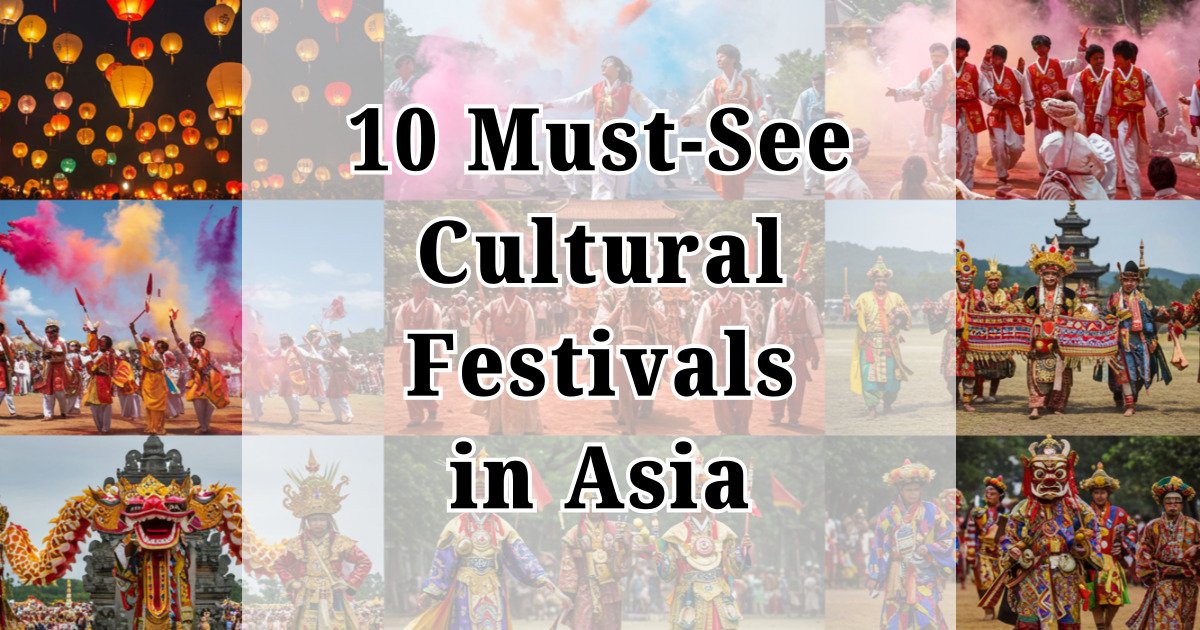Looking for the Top 10 local folk festivals in Asia? You’re in for a cultural journey across a continent rich in ancient traditions and unforgettable celebrations. These festivals are not just events — they are immersive experiences filled with music, dance, rituals, and local flavors. Whether you’re a traveler seeking authenticity or a culture enthusiast, these Top 10 local folk festivals in Asia belong on your bucket list.
In this post, we’ll dive into the Top 10 local folk festivals in Asia, spanning countries from Japan to India, and from Thailand to Mongolia. Prepare to mark your calendar!
1. Gion Matsuri (Kyoto, Japan)
One of Japan’s most iconic festivals, Gion Matsuri is held every July in the historic city of Kyoto. Originally started in the 9th century to appease the gods during a plague, it has evolved into a month-long celebration of Kyoto’s rich traditions.
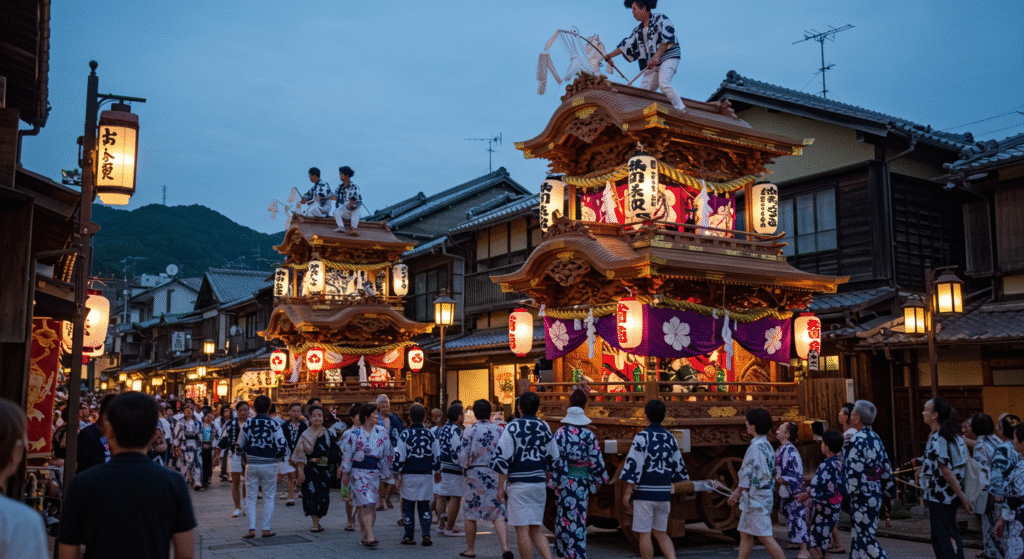
- 🎎 Highlight: Towering floats known as yamaboko, pulled through the streets.
- 🗓️ When: Entire month of July, with main events on the 17th and 24th.
- 📍 Where: Kyoto, Japan
Gion Matsuri is a perfect example of how local folk festivals in Asia preserve traditional culture while drawing in modern global audiences.
2. Surin Elephant Round-up (Surin, Thailand)
This unique local festival showcases the deep bond between Thai people and elephants. The Surin Elephant Round-up features parades, elephant football matches, and historical reenactments.
- 🐘 Highlight: Over 200 elephants participate in spectacular shows.
- 🗓️ When: November
- 📍 Where: Surin, northeastern Thailand
Not just a spectacle, this festival emphasizes the role of elephants in Thai rural life, making it a culturally enriching experience.
3. Tihar (Nepal)
Known as the “Festival of Lights” in Nepal, Tihar is a five-day celebration that honors not just gods and humans, but also animals like crows, dogs, and cows.
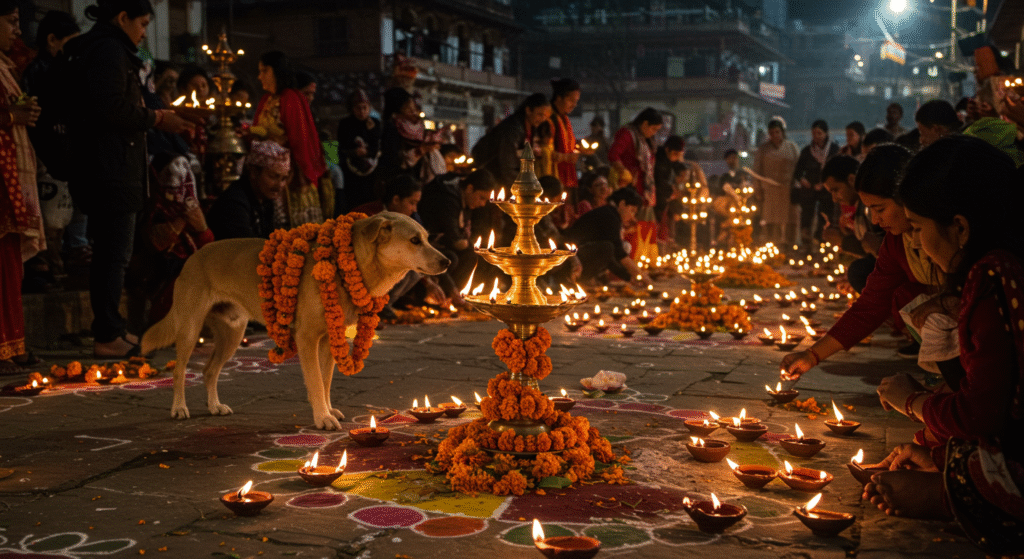
- ✨ Highlight: Each day is dedicated to a different being, including a special day to worship dogs.
- 🗓️ When: October or November (depending on lunar calendar)
- 📍 Where: All over Nepal
Tihar beautifully reflects the diversity and spiritual depth of local folk festivals in Asia, particularly in Hindu communities.
4. Thaipusam (Malaysia, Singapore, India)
A powerful and visually intense festival, Thaipusam is celebrated by Tamil Hindus and is most famously observed in Malaysia and Singapore.
- 🪔 Highlight: Devotees perform acts of penance, including carrying kavadi (burdens) with pierced skin.
- 🗓️ When: January or February
- 📍 Where: Batu Caves (Malaysia), Little India (Singapore), Tamil Nadu (India)
This is one of the most intense local folk festivals in Asia, revealing a blend of faith, endurance, and vibrant cultural expression.
5. Naadam Festival (Mongolia)
If you’re drawn to nomadic cultures and traditional sports, Naadam Festival is unmissable. Often called “the three games of men,” it features wrestling, archery, and horse racing.
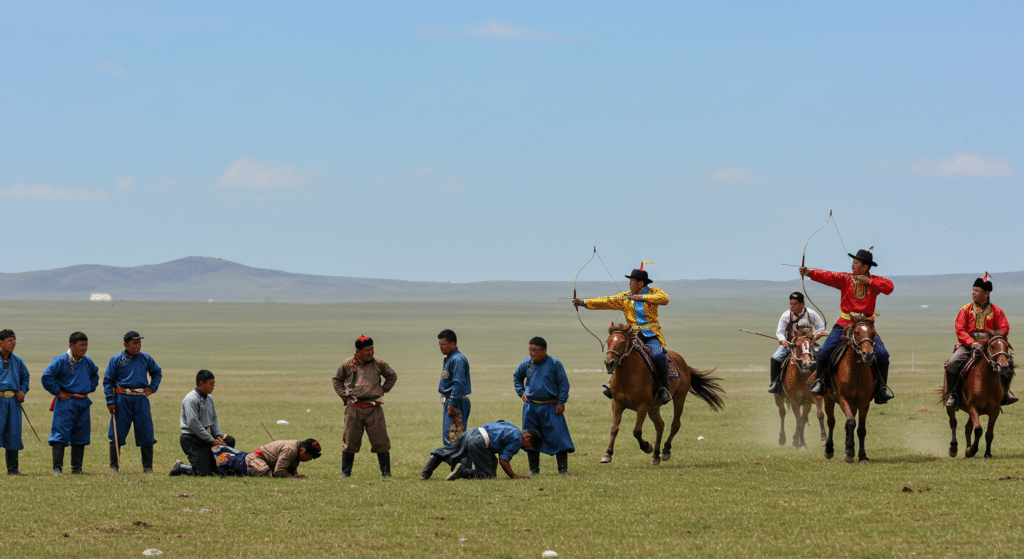
- 🏇 Highlight: Children as young as five compete in long-distance horse races.
- 🗓️ When: July 11–13
- 📍 Where: Ulaanbaatar and rural Mongolia
Naadam is a UNESCO-recognized festival and offers a rare glimpse into Mongolian identity and history — a standout among Asian local folk festivals.
6. Bun Bang Fai Rocket Festival (Laos and Northeast Thailand)
Also known as the Rocket Festival, this event is rooted in ancient fertility rites and the call for rain before the rice planting season.
- 🚀 Highlight: Homemade rockets launched high into the sky amid dancing and drinking.
- 🗓️ When: May
- 📍 Where: Laos and Isan region of Thailand
Colorful and loud, this is one of the most vibrant and community-driven folk festivals in Southeast Asia.
7. Hadaka Matsuri (Japan)
For a festival that’s truly one-of-a-kind, Hadaka Matsuri, or the “Naked Festival”, is celebrated by men wearing minimal clothing, competing to grab sacred sticks for good luck.
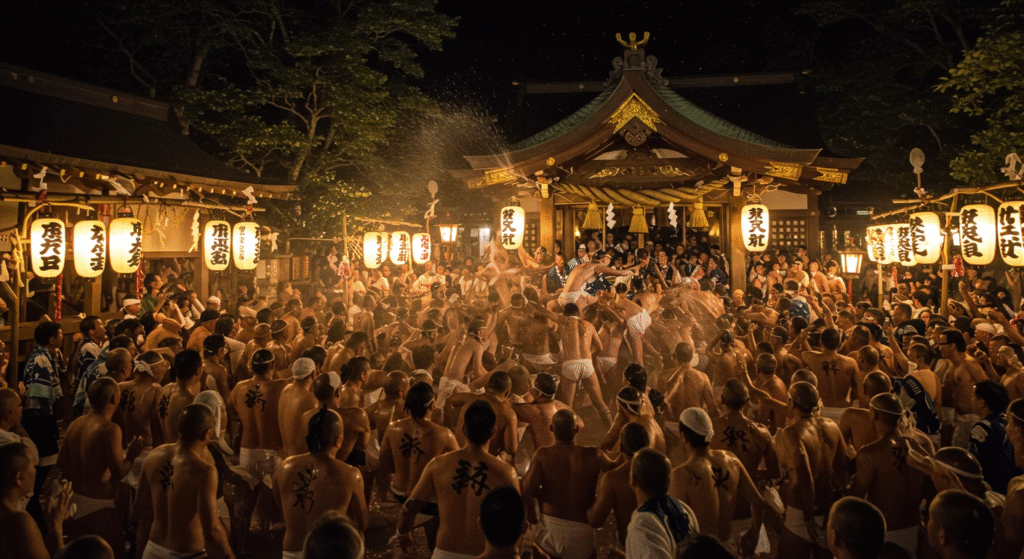
- 🎯 Highlight: Men battling in icy temperatures to grab the shingi stick.
- 🗓️ When: February
- 📍 Where: Okayama, Japan
This festival may seem unusual to outsiders, but it’s deeply rooted in purification rituals and Shinto beliefs, reflecting the spiritual side of local folk festivals in Asia.
8. Hornbill Festival (Nagaland, India)
A convergence of 16 indigenous tribes of Nagaland, Hornbill Festival is a week-long cultural celebration showcasing tribal music, art, and traditions.
- 🔥 Highlight: Warrior dances, traditional Naga food, and handicrafts.
- 🗓️ When: December 1–10
- 📍 Where: Kisama Heritage Village, near Kohima, Nagaland
This is one of the best local folk festivals in India for understanding the tribal diversity often overlooked in mainstream tourism.
9. Boun Ok Phansa (Laos)
Marking the end of Buddhist Lent, Boun Ok Phansa is a river festival involving colorful boat races and candle-lit paper boats released into the Mekong.
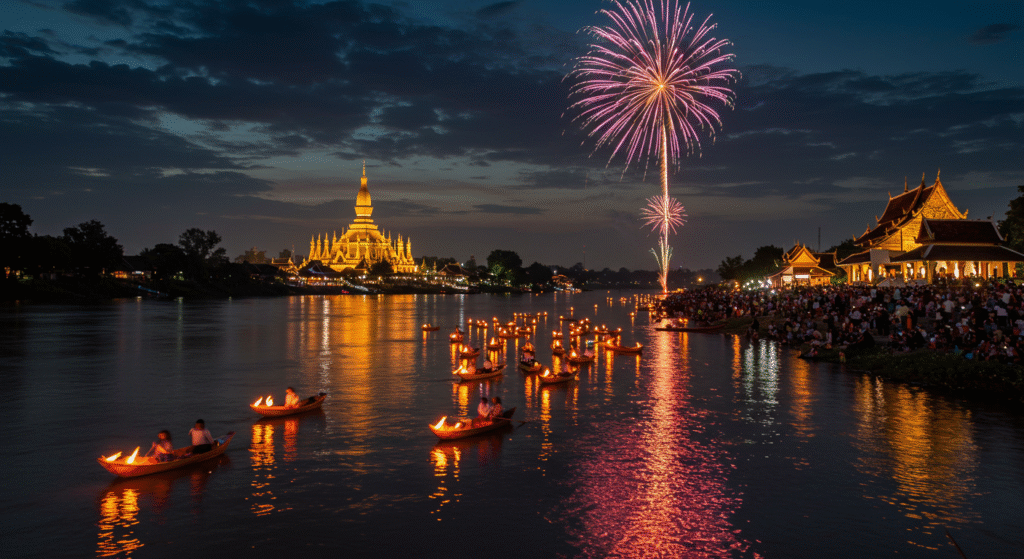
- 🪷 Highlight: The magical sight of thousands of floating lights on the river.
- 🗓️ When: October
- 📍 Where: All over Laos, especially Vientiane and Luang Prabang
Peaceful yet spectacular, this is a shining example of how local folk festivals in Asia blend religion with natural elements.
10. Bihu Festival (Assam, India)
Bihu is a set of three Assamese festivals marking different agricultural cycles: Rongali (spring), Kongali (autumn), and Bhogali (winter). Each is tied to farming, food, and community joy.
- 🌾 Highlight: Folk dance, feasts, and traditional music performances.
- 🗓️ When: April, October, and January
- 📍 Where: Assam, India
Rooted in agrarian traditions, Bihu is among the most heartwarming and joyful folk festivals in Asia.
Why Explore Local Folk Festivals in Asia?
- Authenticity: These festivals offer real insight into local ways of life.
- Cultural Exchange: Great opportunities for meaningful interactions.
- Unique Experiences: From spiritual pilgrimages to rocket launches!
Whether you’re building a travel itinerary or researching cultural traditions, exploring top local folk festivals in Asia can enrich your understanding of the continent like nothing else.
How to Plan Your Trip Around Local Folk Festivals in Asia
One of the best ways to experience local folk festivals in Asia is to align your travel schedule with the festival calendar. Here’s how you can prepare to make the most of it:
1. 📅 Check Festival Dates Carefully
Many festivals in Asia follow lunar or regional calendars. For example:
- Tihar and Boun Ok Phansa follow the Buddhist/Hindu lunar calendar.
- Naadam and Gion Matsuri have fixed Gregorian dates.
Tip: Always double-check the year’s specific dates from local tourism boards before booking your trip.
2. 🛂 Visa and Travel Requirements
Travelers planning to attend Asian folk festivals should:
- Apply for visas early (especially for India, Mongolia, and Laos).
- Confirm COVID-19 or health regulations if still applicable.
- Prepare for large crowds and high demand during major festivals.
3. 🏨 Book Accommodations Early
During famous events like Hornbill Festival or Surin Elephant Round-Up, accommodations near the festival venues sell out months in advance. Booking early helps:
- Secure lower prices
- Get closer access to the venue
- Avoid last-minute travel stress
What to Pack for Folk Festivals in Asia
Packing smartly can enhance your comfort and safety during crowded and often weather-sensitive festivals.
| Item | Reason |
|---|---|
| Light, breathable clothing | Many festivals are held in warm climates |
| Raincoat/umbrella | Especially for events during the monsoon season |
| Power bank & adapter | For photos and navigation during long festival days |
| Local currency | Some areas have limited card access |
| Modest attire | For religious festivals like Thaipusam or Boun Ok Phansa |
Also, bring a small gift or token if you’re staying with a local host — a kind gesture goes a long way in Asia!
Photography Tips for Local Folk Festivals
Festivals offer outstanding photo opportunities, but be mindful of cultural sensitivities.
- 🟢 Do:
- Ask permission before photographing close-ups of people.
- Use natural light during daytime parades or dances.
- Capture wide shots of floats, rituals, or the overall ambiance.
- 🔴 Don’t:
- Use flash in temples or during religious rituals.
- Interrupt ceremonies for a better shot.
- Post without consent for close-up portraits of locals.
Tagging your photos with #localfolkfestivals, #AsiaCulture, or #FestivalTravelAsia also boosts your content visibility on social platforms.
SEO Tip: How to Use “Local Folk Festivals in Asia” in Your Blog or Website
If you’re a travel blogger, content marketer, or affiliate marketer, targeting the keyword “local folk festivals in Asia” can help you attract long-tail traffic. Here’s how:
1. Use in Titles & Meta Descriptions
Example:
- Title: Top 10 Local Folk Festivals in Asia That Will Blow Your Mind
- Meta Description: Explore Asia’s best local folk festivals including Gion Matsuri, Naadam, and Hornbill Festival. Discover cultural gems across the continent.
2. Build Related Content Clusters
Link to articles such as:
- “10 Things to Do at Hornbill Festival”
- “What to Eat During Tihar Festival”
- “Best Local Homestays During Gion Matsuri”
This improves site structure, dwell time, and keyword relevance.
3. Include Long-Tail Keywords
Examples:
- “family-friendly folk festivals in Asia”
- “budget travel for Asian festivals”
- “photography tips for local festivals in Asia”
Cultural Etiquette at Local Folk Festivals in Asia
Many festivals have sacred roots, so respecting local customs is essential.
- 🤝 Bow or greet locals in their traditional style.
- 🚫 Avoid public displays of affection in conservative areas.
- 🥿 Remove shoes before entering homes or religious sites.
- 📿 Participate respectfully — don’t mock or imitate rituals.
Understanding etiquette will not only earn you local appreciation but also make your experience more enriching and safe.
2-Week Travel Itinerary to Visit Local Folk Festivals in Asia
Here’s a sample 2-week Asia travel itinerary focused on attending some of the top local folk festivals:
Week 1: Japan & Thailand
- 🛬 Day 1–3: Tokyo → Kyoto for Gion Matsuri
- ✈️ Day 4–5: Fly to Thailand → Surin for Elephant Round-up
- 🧖♂️ Day 6–7: Explore temples and local villages
Week 2: Laos & India
- 🚌 Day 8–10: Travel to Laos for Boun Ok Phansa
- ✈️ Day 11–14: India for Hornbill or Bihu Festival
This combination gives you exposure to East, Southeast, and South Asian cultures in one trip.
Final Thoughts: Why These Top 10 Local Folk Festivals in Asia Matter
Attending a local folk festival in Asia is not just about sightseeing – it’s about:
- Immersion in community spirit
- Learning from age-old traditions
- Sharing unforgettable moments with locals
Whether you’re dancing with villagers in Nagaland or launching rockets in Laos, these events offer memories that go far beyond Instagram.
